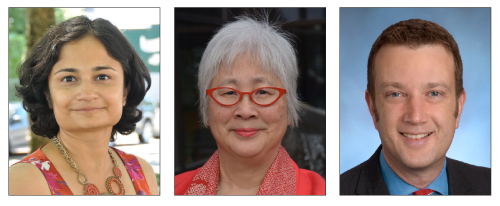
From left: Shefali Ranganathan, Diane Narasaki, and Joe McDermott
King County aims to deliver public transportation that connects communities to jobs, educational services, and cultural institutions. For far too long, communities in southeast Seattle have been marginalized from transit planning. Along with many government and community leaders over a period of years, we have worked hard to change this history and develop a transit system that meets the unique needs of the Rainier Valley and Chinatown-International District.
Traditionally, formal, daytime government meetings served as outreach for transit planning. This left the process inaccessible to many. King County Metro responded to calls from community leaders for a more robust process and went to residents. Online surveys and dozens of in-person interviews in many languages with community leaders and residents were conducted. Metro held community meetings with riders day and night. This effort confirmed that the bus is the critical connection between individuals and the vital services they need. Through outreach, we learned the best way to provide connections to these services.
Southeast Seattle neighborhoods are predominantly low-income, communities of color, limited English speaking immigrants and refugees — and transit dependent. Rainier Valley residents use bus service more than those living in higher-earning areas. Connecting neighborhoods like Renton, Skyway, Rainier Beach, and those along Martin Luther King Jr. Way South (MLK) to the Chinatown-International District connects individuals with culturally sensitive health and human services, shops, churches, temples, community centers, friends, and families. Connecting southeast Seattle to our overall transit system will better connect folks in these neighborhoods to education opportunities and jobs.
The many years of work and outreach informed a proposed restructure to bus services for south Seattle, south King County, and the Chinatown-International District. The proposal changes routes 9 express, 38, 106, 107, and 124 to address a number of long-standing and unmet mobility needs south of downtown. The changes take into account opportunities, culturally and language-appropriate social services, healthcare, cultural events, family gatherings, religious institutions, and businesses, along MLK. It restores historical community connections between the Chinatown-International District and Renton, seeking more convenient access for riders coming from around King County to access opportunities along MLK. Routes like the 106, beginning at the Renton Transit Center, which many south King County residents travel through, will provide people with low-incomes, people of color, and refugees and immigrants, better access.
Public transportation can grow economies, improve access to jobs and education, and transform communities. The new routing of buses in Southeast King County has the potential to do just that. King County Council is currently considering this proposal. If approved, the changes will go into effect this September.
Shefali Ranganathan is the executive director of Transportation Choices Coalition.
Diane Narasaki is the executive director of Asian Counseling & Referral Service (ACRS).
Joe McDermott is chair of the King County Council and represents District 8.



